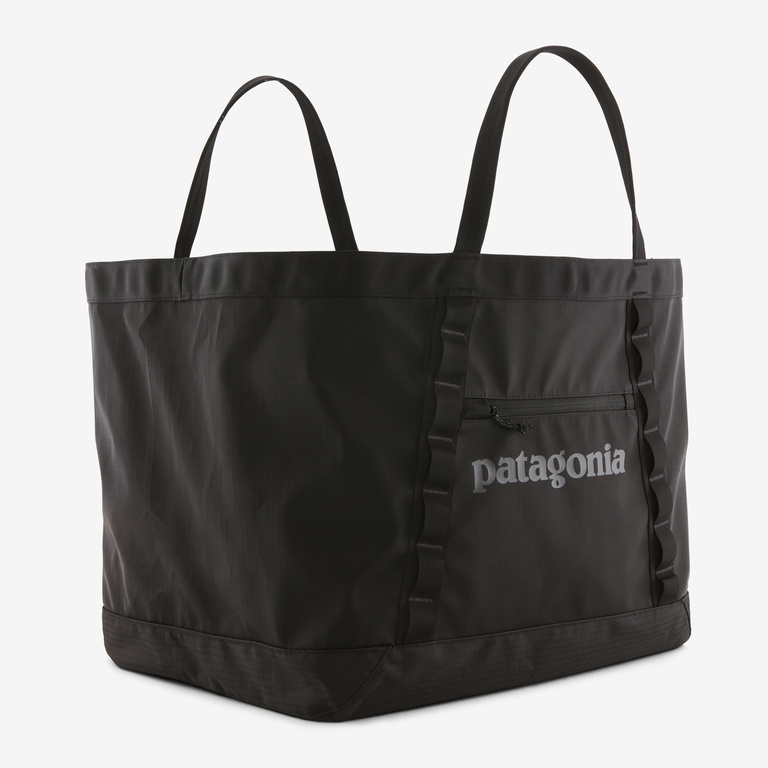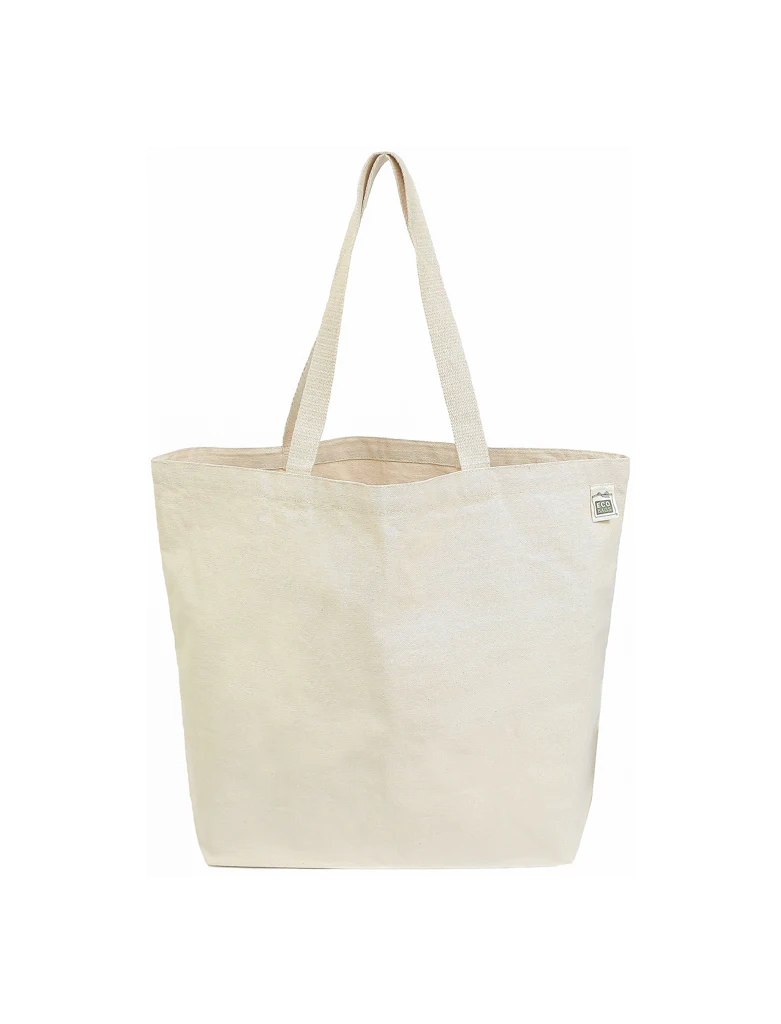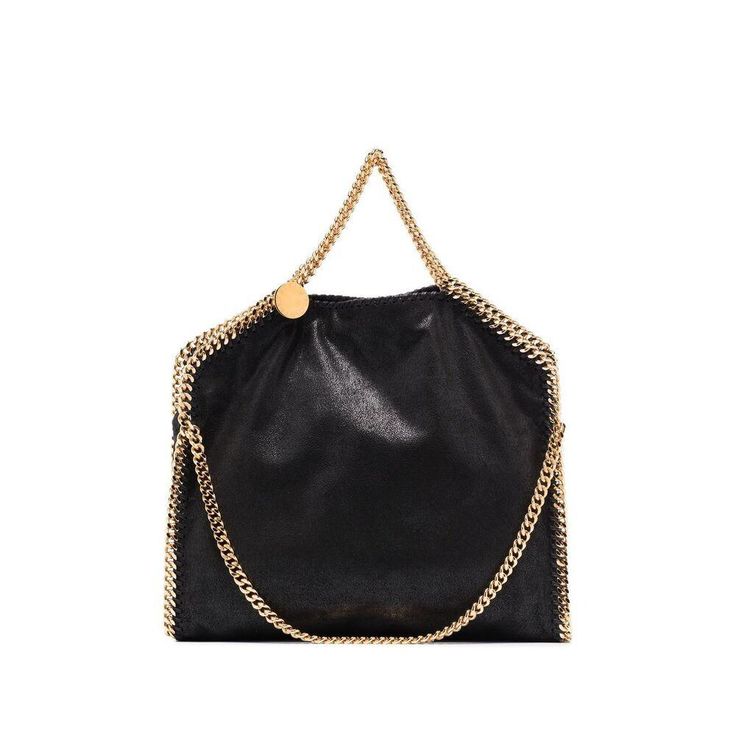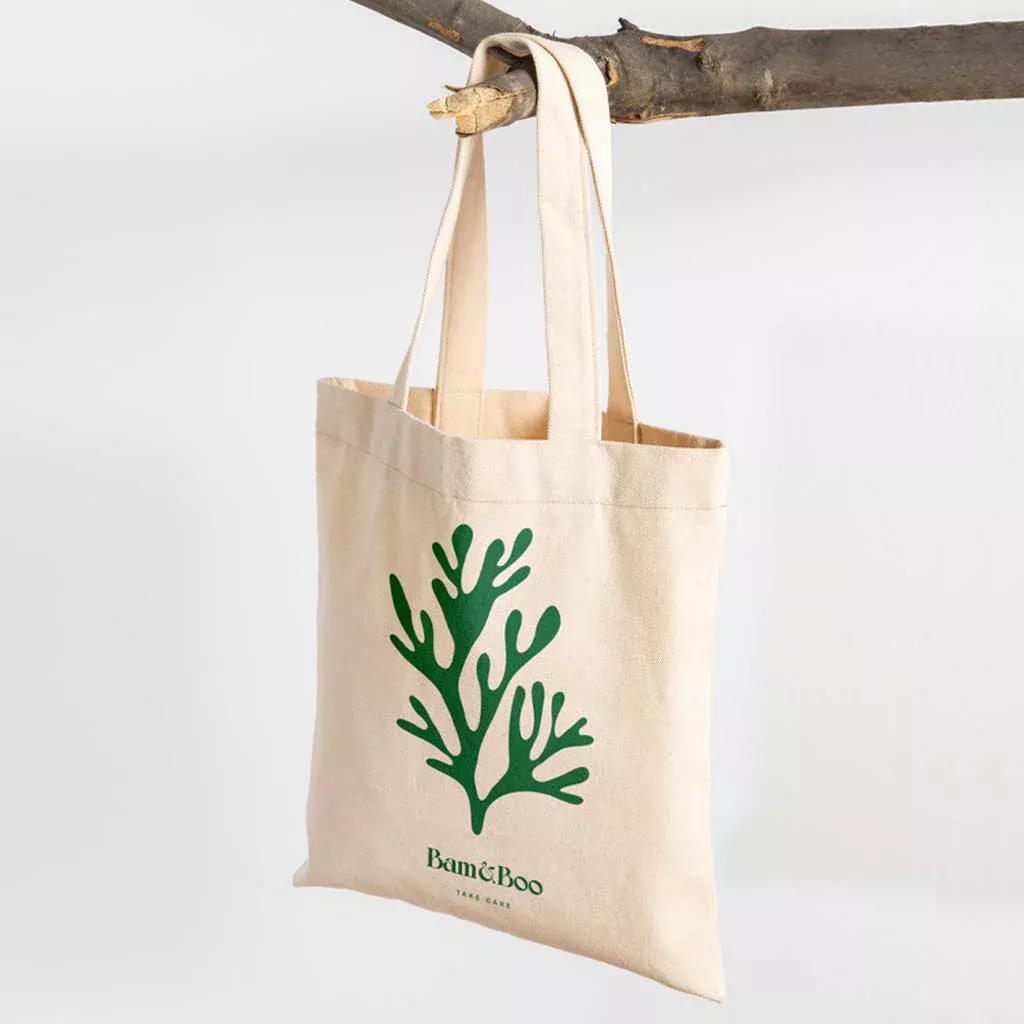In an age where the echoes of environmental concern reverberate across the globe, the collective consciousness about sustainable living has risen with unprecedented vigour. More now than ever, individuals are seeking ways to minimize their ecological footprint, turning their focus towards products and behaviors that support the health of our planet. Amidst this crucial shift, the humble tote bag has emerged as a surprisingly powerful ally.
The tote bag, once a simple accessory primarily valued for its practicality, has been transformed into a symbol of eco-consciousness. Eco-friendly tote bags, designed to be durable, reusable, and made from sustainable materials, are not just a matter of convenience; they represent a movement, a statement of commitment to a greener world.
As we dive into the world of eco-friendly tote bags, it’s important to understand the multifaceted benefits they offer—how they are not only a testament to personal responsibility but also how they significantly contribute to broader environmental solutions. Join us as we explore why choosing an eco-friendly tote bag is not just a positive choice for the environment but an insightful decision for consumers who value durability, style, and ethics.
The Importance of Eco-Friendliness in Today’s World
In today’s fast-paced world, human activity and consumption patterns are placing our planet under unprecedented stress. Among the most pressing concerns is the rampant use of single-use plastics and non-renewable materials. These products, once disposed of, persist in the environment for hundreds of years, polluting our oceans, endangering wildlife, and contributing to the growing crisis of global pollution. The staggering statistics of plastic bags cluttering the environment serve as a wake-up call, illuminating the urgent need for sustainable alternatives.
The environmental issues stemming from such consumption patterns are multifaceted and profound. Landfills are overflowing, and plastic debris in our oceans is disrupting marine ecosystems at an alarming rate. Moreover, the production processes of these materials are energy-intensive and release significant amounts of carbon dioxide, exacerbating the challenges of climate change. This concerning backdrop has propelled eco-friendliness from a niche interest to a pivotal aspect of global discourse.
Recognizing the severity of these ecological challenges, there has been a global movement towards sustainability. Nations, corporations, and communities alike are rallying to adopt more environmentally friendly practices, aiming to mitigate their impact on the planet. Central to this shift is the empowerment of individuals to make conscious choices in their daily lives. From reducing water usage and minimizing waste to opting for renewable energy sources and supporting eco-friendly products, the power of individual action is immense.
Eco-friendly tote bags exemplify how a simple choice can contribute to this broader movement for change. By choosing reusable bags made from sustainable materials, individuals can significantly reduce their consumption of single-use plastics. In doing so, they not only lessen the demand for non-renewable resources but also contribute to a culture that values and prioritizes the health of the environment.
The movement towards sustainability is not just a trend but a necessary evolution of how society interacts with the natural world. It’s a collective journey towards a more sustainable and equitable planet, where the choices of today are conscientiously made to preserve the prosperity of tomorrow. As part of this global effort, embracing eco-friendliness in all facets of life, such as adopting eco-friendly tote bags, becomes not just an act of personal responsibility but a participation in a vital global movement towards sustainability.
What Makes a Tote Bag Eco-Friendly?
Eco-friendly tote bags are designed with the health of the environment at the forefront. This means that every aspect of their creation, from the materials used to their production process and eventual disposal, is oriented toward minimizing environmental harm. But what exactly qualifies a material as eco-friendly, and how do these considerations shape the lifecycle of a tote bag?
Defining Eco-Friendly Materials:
Eco-friendly materials are those that have a relatively low impact on the environment. They are often sourced from sustainable materials and are produced with methods that do not deplete natural resources or cause significant pollution. These materials include:
- Organic Cotton: Grown without the use of harmful pesticides or synthetic fertilizers, thereby reducing environmental toxicity and promoting healthier ecosystems.
- Recycled Materials: Made from repurposed items, such as plastic bottles, which not only reduce waste but also require less energy and resources to produce than new materials.
- Jute: A natural fiber harvested from plants that require minimal chemical treatments, making it biodegradable and compostable.
- Hemp: Known for its durability and grown without needing much water or chemical herbicides or pesticides.
- Bamboo: A highly renewable material due to its fast growth rate and ability to thrive without pesticides.
Sustainable Production Processes:
Creating an eco-friendly tote bag goes beyond selecting sustainable materials; it also involves production processes that aim to minimize environmental impact. These practices may include:
- Using renewable energy sources to power manufacturing plants.
- Employing water-efficient dyeing methods to reduce water waste.
- Limiting the carbon footprint through local manufacturing and reducing transportation emissions.
- Ensuring ethical labor practices and fair trade standards are met.
Lifecycle Comparison:
When compared to their non-eco-friendly counterparts, which are often made from synthetic materials like polyester or non-organic cotton, the lifecycle of eco-friendly tote bags represents a significant improvement in sustainability. Here’s a look at key lifecycle stages:
- Production: Eco-friendly bags generally consume less water and energy to produce. Organic farming practices improve soil health and biodiversity, unlike conventional cotton farming, which can be resource-intensive and detrimental to the environment.
- Usage: Due to their durability, eco-friendly tote bags can be used countless times, whereas plastic bags are often single-use and non-biodegradable, leading to increased waste.
- End of Life: When an eco-friendly tote bag has served its purpose, its biodegradable materials allow it to break down naturally without leaving microplastics behind. Recycled materials can be recycled yet again, extending their lifespan and conserving resources.
The choice of an eco-friendly tote bag is thus not only a choice for a sturdy and practical item but also a conscious decision to support sustainable practices, reduce waste, and become an active participant in preserving the planet for future generations.
Benefits of Using Eco-Friendly Tote Bags
Eco-friendly tote bags offer a range of benefits that extend beyond their immediate practicality. Here’s a deeper look into the advantages of making the switch to these sustainable carry-alls:
Durability and Reusability
One of the most significant benefits of eco-friendly tote bags is their durability. Made from materials like organic cotton, jute, hemp, or recycled plastics, these bags are designed to withstand the wear and tear of daily use. Unlike single-use plastic bags that tear easily and contribute to the waste problem after just one use, eco-friendly tote bags can be used repeatedly—often for years—before needing to be replaced. This reusability leads to a direct reduction in waste, as fewer bags are consumed and discarded by each individual over time.
Biodegradable and Recyclable
At the end of their lifecycle, eco-friendly tote bags made from natural fibers like cotton, jute, or hemp are biodegradable. This means they break down naturally in the environment without leaving behind harmful residues or microplastics. On the other hand, bags made from recycled materials can often be recycled again, keeping materials in use for longer and reducing the need to extract and process raw materials. Both options contribute significantly less to landfill mass compared to their non-biodegradable counterparts.
Versatility
Eco-friendly tote bags are incredibly versatile. They are not only useful for carrying groceries and other shopping items but have also become fashionable accessories due to their diverse range of designs and styles. Beyond their role as a fashion statement, these bags can serve as gym bags, beach bags, picnic bags, or even laptop carriers. The potential uses are virtually limitless, fitting a wide array of needs and lifestyles, making them a staple for everyday convenience.
Positive Impact on Health and Environment
Eco-friendly tote bags are often free of harmful chemicals often found in the production of synthetic materials. Production of conventional plastic bags can involve the use of toxic substances that may leach into food items or present hazards during manufacturing and disposal. By avoiding these chemicals, eco-friendly tote bags represent a healthier option for individuals and the environment. The reduced pollution and lower toxic load associated with the production and decomposition of these bags contribute to cleaner air, water, and soil, fostering a healthier ecosystem overall.
In summary, the benefits of using eco-friendly tote bags are far-reaching. Not only do they offer a durable, reusable, and versatile alternative to disposable bags, but they also align with a more responsible and health-conscious approach to consumerism, benefitting both people and the planet.
How to Choose the Right Eco-Friendly Tote Bag
When selecting an eco-friendly tote bag, it’s important to consider various factors to ensure that your choice aligns with your values, needs, and style. Here’s a guide on what to look for and how to make the best decision:
Evaluating Material and Certifications
- Material: The choice of material plays a pivotal role in the eco-friendliness of a tote bag. Look for natural and sustainable materials like organic cotton, jute, hemp, or bamboo. Recycled materials, such as PET plastic turned into fabric, are also an excellent choice for reducing environmental impact. Each material has unique benefits, like durability, biodegradability, or recycled content, so consider what’s most important to you.
- Certifications: Certifications can help verify the eco-credentials of a tote bag. Keep an eye out for:
- Global Organic Textile Standard (GOTS) for organic materials, ensuring that the entire production process meets high environmental and social standards.
- Fair Trade Certification to ensure workers involved in making the bags are paid fair wages and work in safe conditions.
- OEKO-TEX® Standard 100 for testing textiles for harmful substances.
These certifications can offer peace of mind about the ethical and sustainable production of the bag.
Brand Ethics and Sustainability Practices
Research the brand’s ethics and sustainability practices to ensure they align with your values. A truly eco-friendly brand should have transparency in their supply chain, commit to sustainable production methods, actively reduce their carbon footprint, and possibly support environmental initiatives or charities. Ethical labor practices are also a key component of sustainability, emphasizing the importance of supporting brands that treat their workers fairly.
Selecting the Correct Size, Style, and Design
- Size: Consider what you’ll be using the bag for. If it’s mainly for grocery shopping, look for a larger size that can hold several items. If it’s for everyday personal use, a smaller, more manageable size might be more appropriate. Some tote bags offer features like compartments or zippers, which can be useful for organizing contents or securing valuables.
- Style and Design: Eco-friendly tote bags come in a wide range of styles and designs, from minimalist to ones adorned with artist collaborations or messages promoting sustainability. Choose a design that reflects your personality and fits your lifestyle. Also, consider if you want a bag that can be folded or rolled up for easy storage when not in use.
Practicality and Comfort
- Handles and Straps: Ensure the bag has sturdy handles or straps that are comfortable to carry, even when the bag is full. Some bags offer adjustable straps or additional handle lengths to suit different preferences and uses.
- Maintenance: Look for bags that are easy to clean or maintain. Some materials may be machine washable, while others might require spot cleaning. Considering the bag’s care requirements will help maintain its appearance and longevity.
By taking the time to consider material, certifications, brand ethics, and your specific needs regarding size, style, and practicality, you can choose an eco-friendly tote bag that is not only perfect for your everyday activities but also contributes positively to the environment.
Care and Maintenance of Eco-Friendly Tote Bags
Eco-friendly tote bags, whether made from organic cotton, jute, hemp, or recycled materials, require proper care to ensure they last long and continue to look great. Here are practical tips on how to care for and extend the life of your eco-friendly tote bags, along with cleaning and storage recommendations.
General Care Tips
- Reduce Wear and Tear: Rotate between bags to prevent overuse and excessive wear on any single bag. Avoid overloading to prevent stretching and damage to the handles.
- Immediate Attention to Stains: Treat stains as soon as they occur. Use a stain remover that is appropriate for the bag’s material, and always test it on an inconspicuous area first.
- Regular Cleaning: Depending on how frequently you use the tote, establish a regular cleaning routine to remove dirt and prevent build-up.
Cleaning Recommendations by Material
Organic Cotton and Hemp
- Machine Washing: These materials can generally be machine washed in cold water on a gentle cycle with eco-friendly detergent. Avoid using bleach as it can weaken the fibers.
- Air-Drying: Always air-dry the bags by hanging them or laying them flat on a clean surface. Avoid using a dryer as the high heat can cause shrinkage.
Jute
- Spot Cleaning: Jute bags shouldn’t be submerged in water as they are prone to shrinking and wrinkling. Instead, spot clean stains using a damp cloth and mild detergent.
- Air-Drying: After spot cleaning, let the bag air dry completely away from direct sunlight.
Recycled Materials
- Checking Care Instructions: Care for bags made of recycled materials will depend on the specific fabric. Check the manufacturer’s care instructions.
- General Care: In many cases, wiping with a damp cloth or spot cleaning will suffice. If machine washable, use a gentle cycle.
Storage Recommendations
- Proper Drying Before Storage: Ensure that bags are completely dry before storing them to prevent mold and mildew growth.
- Cool, Dry Place: Store tote bags in a cool, dry place, away from direct sunlight which can fade colors and weaken fibers.
- Maintaining Shape: Stuff bags with clean, dry paper or cloth to help them keep their shape during storage. Avoid using plastic as it can trap moisture.
- Hanging or Folding: If space allows, hang the bags to prevent creases and folds, or fold them neatly if drawer space is chosen for storage.
Additional Tips
- Repellent Treatments for Outdoor Bags: For bags used in outdoor settings, consider using a fabric protectant spray that’s eco-friendly to help repel water and stains.
- Mildew Prevention: For humid climates, consider using silica gel packets when storing your bags to absorb excess moisture.
Proper care and maintenance of your eco-friendly tote bags can significantly extend their lifespan, reducing the need for frequent replacements and thus furthering your commitment to sustainability.
Popular Eco-Friendly Tote Bag Brands and Where to Find Them
Eco-friendly tote bags are not just a trendy accessory; they are a statement of sustainability and ethical responsibility. Many brands have embraced the demand for environmentally friendly products, offering a wide range of tote bags that are both stylish and sustainable. Here’s an overview of reputable eco-friendly tote bag brands and where you can find them:
1. Baggu

Overview: Baggu is renowned for its durable, reusable bags that come in a variety of vibrant colors and prints. Their bags are made using sustainable materials, including recycled nylon and organic cotton.
Where to Find: Baggu bags are available on their official website, and they also retail through various online platforms like Amazon and Urban Outfitters. Some physical stores and boutiques that focus on eco-friendly products may also stock Baggu products.
2. Patagonia

Overview: Known for its commitment to the environment and sustainability, Patagonia offers a range of eco-friendly tote bags made from recycled materials. Their bags are designed for durability, making them perfect for shopping, travel, and outdoor activities.
Where to Find: You can purchase Patagonia tote bags directly from their website, Patagonia retail stores, and select outdoor retailers both online and offline.
3. ECOBAGS

Overview: ECOBAGS is a pioneering brand in the eco-friendly bag market, focusing on simple, sustainable solutions. They offer a wide array of tote bags made from organic cotton and recycled materials, emphasizing a zero-waste lifestyle.
Where to Find: Their products are available on the ECOBAGS website and through various health food stores, eco-friendly shops, and online marketplaces like Amazon.
4. Tentree

Overview: Tentree is not just about products; it’s about planting trees. For every item purchased, ten trees are planted. Their eco-friendly tote bags are made with sustainable materials, such as hemp and recycled polyester, featuring functional designs and earthy tones.
Where to Find: Tentree’s products are available on their website, as well as through select online retailers like Amazon. They also list partner stores on their website where you can find their products physically.
5. Stella McCartney

Overview: Stella McCartney is a high-end brand that has been committed to sustainability long before it became a trend. Their tote bags, part of their wider range of eco-friendly fashion, are made from innovative and sustainable materials.
Where to Find: Stella McCartney tote bags can be purchased through their official website, high-end department stores and boutiques, and luxury online retailers.
6. Matt & Nat

Overview: Matt & Nat stands for Material and Nature, a brand that focuses on vegan materials without compromising style. Their tote bags are made from recycled nylons, cardboard, rubber, and cork.
Where to Find: Available on the Matt & Nat website, select boutiques, and various online retailers that specialize in vegan and eco-friendly products.
Tips for Purchasing
- Check the Brand’s Sustainability Claims: Look for detailed information about the materials used and the brand’s ethical manufacturing processes.
- Shop Local: Whenever possible, try to purchase from local stores or directly from the manufacturer’s website to reduce carbon footprint associated with shipping.
By choosing to buy an eco-friendly tote bag from these reputable brands, you’re not only getting a durable and stylish product but also contributing to a healthier planet. Whether you prefer shopping online for the widest selection or visiting a physical store to see the products firsthand, there are plenty of options to find the perfect eco-friendly tote bag.
DIY Eco-Friendly Tote Bags
Creating your own DIY eco-friendly tote bag is not only a fun project but also an effective way to reduce waste and make a bigger environmental impact. Here are a few simple ideas for DIY tote bags you can try:
1. T-Shirt Tote Bag
Materials Needed:
- An old T-shirt
- Scissors
- A marker (optional)
Steps:
- Start by laying out your T-shirt on a flat surface. If there’s any text or graphic that you’d like to show on the bag, make sure it’s facing up.
- Cut off both sleeves, leaving the seam intact. Your T-shirt should now resemble a tank top. The armholes will become the handles of the tote bag.
- Cut the neckline in a U-shape to create the opening for your tote bag.
- Decide how deep you want your bag to be, then draw a straight line (optional) and cut straight across. Remember, the more fabric left, the deeper the tote.
- Turn the T-shirt inside out. From the cut bottom section, make about 10 cuts (about 3-4 inches) upwards to create fringes.
- Now, tie the front and back fringes into tight knots, ensuring there are no gaps. This will close the bottom of the bag.
- Finally, flip it inside out again, and your T-shirt tote bag is ready to use.
2. Denim Tote Bag
Materials Needed:
- An old pair of jeans
- Scissors
- Sewing machine or needle and thread
- Pins
Steps:
- Cut both legs off your jeans at the desired height for your tote bag, generally just below the seat.
- Turn the cut section inside out and pin along the cut seam. Use a sewing machine or a needle and thread to sew a straight line across the bottom of your future tote bag to create the base.
- For added durability or a flat bottom, consider creating a gusset in your bag by sewing triangles into the bottom corners.
- The waistband and belt loops will serve as the handles of your tote bag.
- Turn your bag right side out, and your denim tote bag is ready to use.
With these DIY projects, you can make stylish, unique, and eco-friendly tote bags from recycled or used materials. Not only will you save money, but you’ll also reduce waste and have a durable, reusable tote bag to take shopping, to the gym, or anywhere else you may need.
Conclusion
The increasing environmental crises demand thoughtful and sustained actions. One such initiative is the transition to eco-friendly products, like tote bags. These reusable bags, often made from sustainable or recycled materials, provide an easy and practical way to minimize our reliance on single-use plastics. By carrying a tote bag, you’re not just making a fashion statement; you’re participating in a crucial cultural shift towards heightened environmental consciousness.
Notably, tote bag brands come in all shapes and sizes, catering to every taste and need. Recognized brands like Baggu, Patagonia, and ECOBAGS, among others, offer high-quality, sustainable options. If you’re more of a hands-on person, DIY eco-friendly tote bags can be a fun and rewarding project.
Remember, the goal is bigger than tote bags. It’s about making small, conscious decisions each day that contribute to a larger, impactful change. If everyone chooses to make these seemingly small changes, such as replacing plastic bags with reusable totes, the cumulative effect can be monumental.
So whether it’s switching to sustainable brands or making your own tote bags, let’s remember that every action counts. Let’s do our part, one eco-friendly tote bag at a time, to protect our planet and ensure a greener future for generations to come.
We are constantly inspired by the collective efforts of individuals around the world striving to make positive environmental changes. Now, we’re turning to you, our incredible community. We invite you to share your favorite eco-friendly tote bags and the stories behind them. Do you have a go-to brand that aligns perfectly with your values, or perhaps a cherished DIY tote bag that’s as unique as your commitment to sustainability?
Moreover, we are all on this journey together, navigating the challenges and triumphs of living more sustainably. If you have any tips, tricks, or life hacks that have made your journey easier and more impactful, please share them with us. Your insights could be the spark that ignites change in someone else’s life.
Don’t miss out on our future posts! For more eco-friendly tips, guides, and engaging discussions, make sure to follow our blog. Together, let’s cultivate a community that thrives on sharing knowledge, inspiring action, and celebrating the small yet significant victories on our path to a more sustainable world.
Your Actions Matter
Every choice, every action, and every recommendation you make has the potential to create waves of change. Share your eco-friendly tote bag favorites and sustainability tips with us in the comments below or on our social media platforms. Let’s create a ripple effect of positive change for our planet, one eco-conscious decision at a time.
Join us, share, and stay tuned for more ways to live sustainably with purpose and passion.









